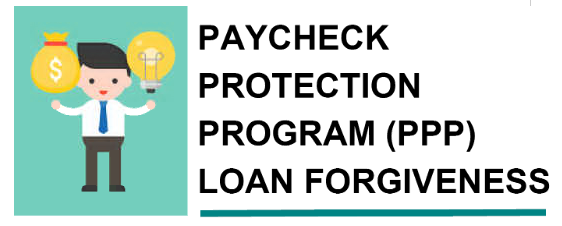PPP Loan Forgiveness & Documentation

Many of you may soon receive the PPP loan proceeds. This may be the first tangible recovery relief that a business will receive, and it may well provide the cash liquidity needed to survive this crisis. So first it is essential to protect these funds and then put them to work in support of your business.
The next step will be the debt forgiveness relief option. We are hopeful that many of you will have most of the loan forgiven. Based on what we know today, we are recommending some best practices on how to document qualified expenses for forgiveness of the loan. This period of time is extremely important. As soon as you receive the proceeds from the loan, the 8 week loan forgiveness period begins.
• Consider the timing of the closing of the loan and the funding of the cash, which starts the 8 week period. As of today, SBA is indicating that you have up to 10 calendar days forward to schedule the loan closing. For a business that is on limited operations, deferring the closing date would allow more eligible expenses to be paid during the 8 week forgiveness period.
• Open a separate bank account for the PPP loan proceeds. As you pay qualified expenses (see list below) from the business operating account, use the proceeds from the PPP loan to reimburse the operating bank account for those qualified expenses.
• In your accounting software, establish a separate general ledger account for the loan proceeds, and then for the cancelled debt amount.
• Maintain a file with copies of cancelled checks for qualified expenses including utilities, rent and interest, and statement and receipts as much as possible.
• Be prepared to provide a copy of your current lease agreement. We do not know if this will be required, but it has been mentioned as part of the verification process. If you do not have a lease but have a history of lease payments, it is possible this will suffice. A document explaining the lease terms and payment history may be helpful. We expect this to be clarified in the next couple of weeks.
**For sole proprietors (Form 1040 Schedule C) and partnerships (Form 1065), you will most likely be required to provide a profit and loss statement and copies of your bank statements for the 8 week forgiveness period. It may be smart to actually pay out checks during the 8 week period for the self-employment income of the owner. **
Qualified Expenses:
Payroll Costs (At least 75% of the amount forgiven must be used on payroll expenses)
- 1. Gross Wages, Commissions, Tips, etc. (as will be reflected on Forms 940/941, with Cafeteria Plans, it will be the 940 amount)
(The SBA guidance on the wage forgiveness calculation is still uncertain. Currently, the guideline calculation is not truly gross wages, but net wages after Social Security, Medicare and Federal Income Tax Withholding. However, this seems to contradict from the language in the Act and common and logical tax and accounting definitions. We are watching for updates.) - 2. Retirement Plan Contributions (employer portion)
- 3. Employee Benefits
a. Health Insurance Premiums (employer-paid)
b. Group & Executive Disability Insurance Premiums
c. Vision Insurance Premiums
d. Dental Insurance Premiums
e. Other Supplemental Benefits - 4. State and Local Employment Taxes (e.g., state unemployment taxes)
Rent, utilities, and mortgage interest (further definitions to come).
If after the 8 week period, you have remaining funds that were not used for qualified expenses, the balance will be subject to a 2 year loan at 1% interest with no payment for six months from the date of the loan.
We expect additional guidance on documentation for the loan forgiveness to be released soon, and we will send updates as we receive them. Please let us know if need assistance or have any questions.
Thank you,
- Emily Zizzi, CPA
- President
